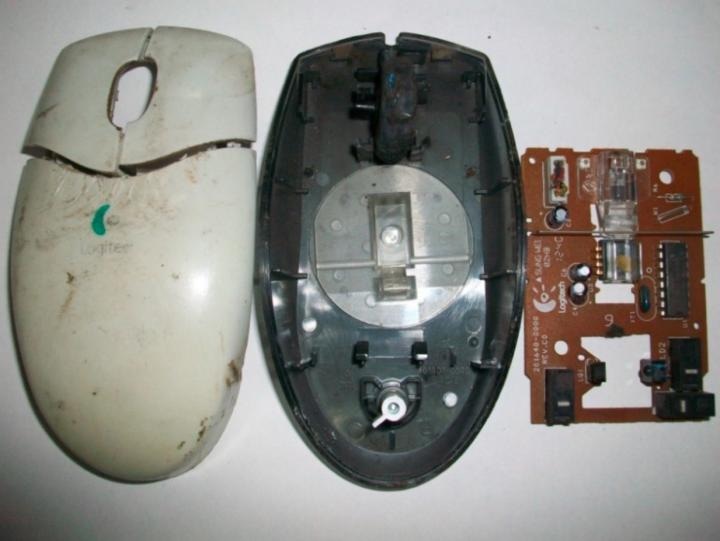Mar 22 2017
 Circuit boards from electronics, like computer mice, can be crushed into nanodust by a cryo-mill, according to researchers at Rice and the Indian Institute of Science. The dust can then be easily separated into its component elements for recycling. (Courtesy of the Ajayan Research Group)
Circuit boards from electronics, like computer mice, can be crushed into nanodust by a cryo-mill, according to researchers at Rice and the Indian Institute of Science. The dust can then be easily separated into its component elements for recycling. (Courtesy of the Ajayan Research Group)
A idea to simplify electronic waste recycling was recently proposed by a team of researchers from Rice University and the Indian Institute of Science. They recommend crushing the electronic waste into nanodust.
Specifically, they want to make the particles so small that separating different components is relatively simple compared to methods that are currently used to recycle electronic waste.
Chandra Sekhar Tiwary, a postdoctoral researcher at Rice and a researcher at the Indian Institute of Science in Bangalore, uses a low-temperature cryo-mill to crush the electronic waste - mainly the chips, other electronic parts, and polymers that make up printed circuit boards (PCBs) - into particles so tiny that they will not contaminate each other.
Then they can be organized and reused, he explained.
The method is the subject of a Materials Today paper by Tiwary, Rice materials scientist Pulickel Ajayan and Indian Institute professors Kamanio Chattopadhyay and D.P. Mahapatra.
The researchers expect it to replace existing processes that involve dumping obsolete electronics into landfills, or treating or burning them with chemicals to recover valuable alloys and metals. None of those methods are particularly environment friendly, Tiwary said.
In every case, the cycle is one way, and burning or using chemicals takes a lot of energy while still leaving waste. We propose a system that breaks all of the components – metals, oxides and polymers – into homogenous powders and makes them easy to reuse.
Chandra Sekhar Tiwary, Postdoctoral Researcher, Rice University
The researchers estimate that e-waste will increase by 33 % in the next four years, and by 2030 will weigh over a billion tons. Approximately 80 to 85 % of mostly toxic e-waste ends up in a landfill or an incinerator, Tiwary said. According to the Environmental Protection Agency it is the fastest-increasing waste stream in the United States.
The solution may be larger versions of a cryo-mill designed by the researchers that, rather than heating them, maintains materials at ultra-low temperatures during the crushing process.
Cold materials are more brittle, thus easier to crush, Tiwary said.
We take advantage of the physics. When you heat things, they are more likely to combine: You can put metals into polymer, oxides into polymers. That’s what high-temperature processing is for, and it makes mixing really easy. But in low temperatures, they don’t like to mix. The materials’ basic properties – their elastic modulus, thermal conductivity and coefficient of thermal expansion – all change. They allow everything to separate really well.
Chandra Sekhar Tiwary, Postdoctoral Researcher, Rice University
For demonstration purpose, the team used computer mice – or rather their PCBs. The cryo-mill contained a single tool-grade steel ball and argon gas. A steady stream of liquid nitrogen maintained the container at 154 K (-182 °F).
When shaken, the ball first smashes the polymer, then the metals, and then the oxides just long enough to separate the materials into a powder, with particles measuring between 20 and 100 nm wide. That can process can take about three hours, following which the particles are bathed in water to separate them.
“Then they can be reused,” he said. “Nothing is wasted.”
S. Kishore of the Indian Institute of Science is the paper’s co-lead author. R. Vasireddi, also from the Indian Institute of Science, is a co-author. Ajayan is chair of Rice’s Department of Materials Science and NanoEngineering, the Benjamin M. and Mary Greenwood Anderson Professor in Engineering and a professor of chemistry.